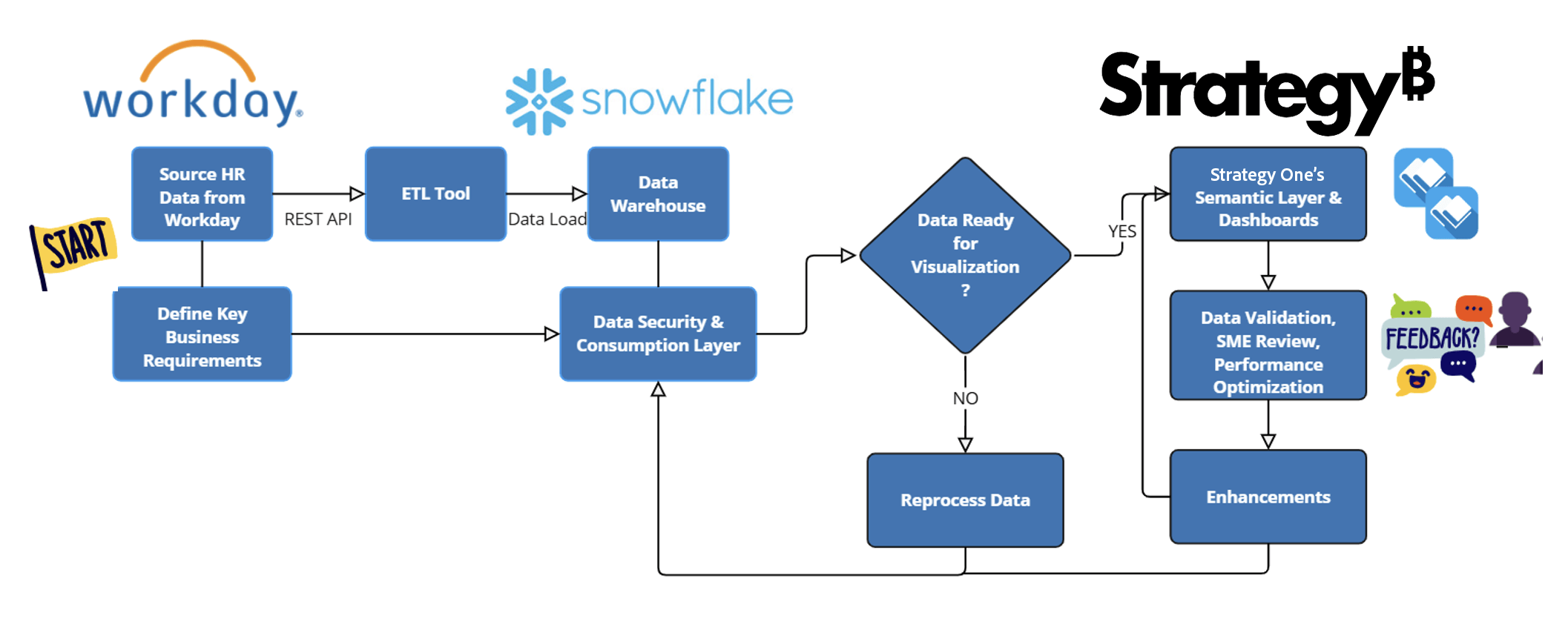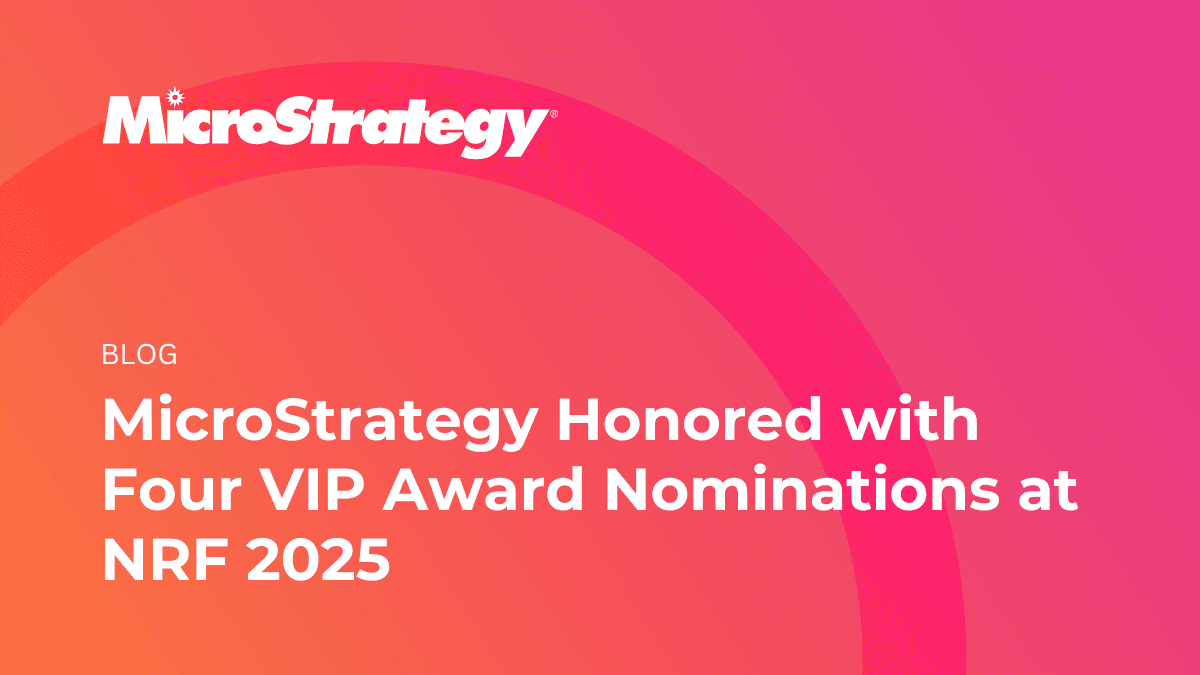Workday + Strategy Integration: Elevating Workforce Analytics for Retail Organizations
Managing a dynamic workforce in the retail industry is a multifaceted challenge. Retail businesses frequently encounter challenges such as high turnover rates, data silos, and manual processes.
However, with the right tools and strategies, these obstacles can become opportunities for growth and efficiency.
From workforce analysts to HR business partners (HRBPs), discover how retail organizations can leverage advanced analytics to turn workforce management into a strategic competitive advantage.
The Challenge
High turnover costs, such as recruiting or onboarding, can significantly impact a workforce.
Despite these risks, many organizations still lack a unified strategy to analyze and address them effectively.
HRBPs and workforce analysts highlight the common pain points:
- Data Silos: Workforce information is often scattered across systems like Workday, making it difficult for analysts to access and extract actionable insights.
- Manual Processes: Extracting and analyzing data from multiple platforms often relies on manual, Excel-based workflows, which hinder collaboration between HR teams, store leaders, and executives.
- Security Risks: Sensitive HR data is sometimes shared using unsecured methods, such as email attachments, increasing privacy and compliance vulnerabilities.
- Lack of Real-Time Insights: Once distributed, workforce data quickly becomes outdated, limiting its usefulness for real-time decision-making.
- Lack of Self-Service Tools: Without user-friendly, self-service capabilities, workforce analysts face bottlenecks in gathering, filtering, and sharing critical information.
The Why
Enhancing workforce analytics goes beyond improving operational efficiency—it has a measurable impact on profitability. For example, a 10% reduction in employee turnover could save a retail organization millions of dollars each year.
Furthermore, access to real-time workforce insights can empower HRBPs and store leaders to make data-driven decisions, helping them build an informed, resilient, and engaged workforce.
The Solution
By integrating Workday and Strategy One, organizations can adopt a comprehensive solution that addresses common pain points and offers the following solutions:
- Business Requirements Analysis: Identifies key HR metrics, reporting timeframes, user personas, and UI/UX needs.
- Optimized Data Model: Snowflake’s schema design and Strategy One’s analytics capabilities provide a scalable foundation.
- End-to-End Security: Workday's authentication seamlessly extends to Strategy One dashboards, safeguarding sensitive data.
- Interactive Dashboards:
- Summary-to-Detail Views: High-level overviews with drill-down capabilities for granular analysis.
- Trend Analysis: Monitors key metrics over time to identify patterns.
- Outlier Detection: Highlights top and bottom performers for targeted action.
- Benchmark Comparisons: Compares metrics against industry standards or internal goals.
- Metric Decoders: Built-in guides ensure clarity and usability.

The Execution Strategy
1. Evaluating the Ecosystem
Workday and Strategy One’s robust workforce analytics platform can upgrade an organization’s technology stack in the following areas:
- Human Capital Management (HCM): Workday with Prism enables workforce data aggregation.
- Data Integration: Tools like Snowflake and Talend streamline ETL processes.
- Business Intelligence (BI): Strategy One stands out for its scalability and advanced analytics capabilities.
- Identity and Access Management: Solutions like Okta, Active Directory, and Strategy One security ensure secure, role-based access.
2. Defining Key Business Requirements
Furthermore, the cloud-based solution assures:
- Data Dimensions: Metrics for recruitment, retention, development, and engagement.
- Security: Workday pass-through authentication for secure data access.
- User Experience: Intuitive dashboard design with clear navigation and actionable insights.
3. Executing the Strategy
Lastly, a phased implementation approach ensures iterative development and continuous improvement:
- Proof of Concept (POC) and MVP: Builds prototypes to test data strategy, integration, and visualization tools.
- Agile Development: Delivers dashboards topic by topic, incorporating feedback from subject matter experts (SMEs).
The Result
Integrating Workday and Strategy One helps retail organizations eliminate data silos and minimize manual effort. The result is a workforce analytics platform that not only delivers significant cost savings but also builds a culture of data-driven decision-making. It also protects sensitive information and empowers decision-makers with real-time insights.
As the retail industry continues to evolve, organizations that leverage innovative analytics solutions will be better positioned to adapt, compete, and thrive. Partner with Workday and Strategy to build a smarter, more agile workforce—and drive your organization forward.
Related posts
Endless Possibilities. One Platform









